A vertical take-off and landing (VTOL) aircraft is one that can take off and land vertically without relying on a runway. This classification can include a variety of types of aircraft including helicopters as well as thrust-vectoring fixed-wing aircraft and other hybrid aircraft with powered rotors such as cyclogyros/cyclocopters and gyrodynes.

The Yakovlev Yak-38 was Soviet Naval Aviation's only operational VTOL strike fighter aircraft in addition to being its first operational carrier-based fixed-wing aircraft. It was developed specifically for, and served almost exclusively on, the Kiev-class aircraft carriers.

The AgustaWestlandAW609, formerly the Bell/Agusta BA609, is a twin-engined tiltrotor VTOL aircraft with a configuration similar to that of the Bell Boeing V-22 Osprey. It is capable of landing vertically like a helicopter while having a range and speed in excess of conventional rotorcraft. The AW609 is aimed at the civil aviation market, in particular VIP customers and offshore oil and gas operators.

The Yakovlev Yak-141, also known as the Yak-41, is a Soviet supersonic vertical takeoff/landing (VTOL) fighter aircraft designed by Yakovlev. Intended as a replacement for the Yak-38, it was designed as a supersonic fleet defence fighter capable of STOVL/VTOL operating from Soviet carriers. Four prototypes were built before the project's cancellation.
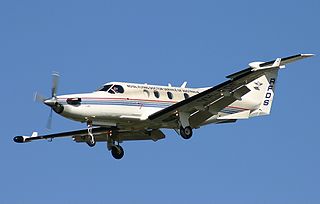
The Pilatus PC-12 is a pressurized, single-engined, turboprop aircraft manufactured by Pilatus Aircraft of Stans, Switzerland since 1991. It was designed as a high-performance utility aircraft that incorporates a large aft cargo door in addition to the main passenger door. Due to its efficient, high-utility design, the PC-12 is used by a large variety of operators. The main use for the aircraft is corporate transportation, but it is also used by fractional and small regional airlines, air-ambulance operators, and many government agencies, such as police departments and armed forces. The PC-12 is successful with 2,000 deliveries made as of May 2023.

The Rutan Model 54 Quickie is a lightweight single-seat taildragger aircraft of composite construction, configured with tandem wings.

The Bell X-14 is an experimental VTOL aircraft flown in the United States in the 1950s. The main objective of the project was to demonstrate vectored thrust horizontal and vertical takeoff, hover, transition to forward flight, and vertical landing.

The Dornier 228 is a twin-turboprop STOL utility aircraft, designed and first manufactured by Dornier GmbH from 1981 until 1998. Two hundred and forty-five were built in Oberpfaffenhofen, Germany. In 1983, Hindustan Aeronautics Limited (HAL) bought a production licence and manufactured another 125 aircraft in Kanpur, Uttar Pradesh, India. In July 2017, 63 aircraft were still in airline service.

The Curtiss-Wright X-19, company designation Model 200, was an American experimental tiltrotor aircraft of the early 1960s. It was noteworthy for being the last aircraft of any kind manufactured by Curtiss-Wright.

The Let L-410 Turbolet is a twin-engine short-range transport aircraft designed and produced by the Czech aircraft manufacturer Let Kunovice.
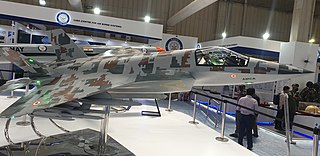
The Advanced Medium Combat Aircraft (AMCA) is an Indian single-seat, twin-engine, all-weather fifth-generation stealth, multirole combat aircraft being developed for the Indian Air Force and the Indian Navy. The Mark-1 variant of the aircraft will be a fifth generation fighter while the Mark-2 variant will have sixth-generation technologies. The aircraft is designed by the Aeronautical Development Agency (ADA) - an aircraft design agency under MoD. A Special Purpose Vehicle (SPV) consisting of ADA, Hindustan Aeronautics Limited (HAL) and a private company is being formed for the development and production of AMCA. In March 2024, the project received approval from India's Cabinet Committee on Security for the prototype development.
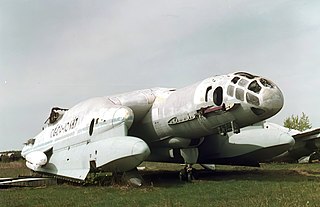
The Bartini Beriev VVA-14Vertikaľno-Vzletayushchaya Amfibiya was a wing-in-ground-effect aircraft developed in the Soviet Union during the early 1970s. Designed to be able to take off from the water and fly at high speed over long distances, it was to make true flights at high altitude, but also have the capability of flying efficiently just above the sea surface, using aerodynamic ground effect. The VVA-14 was designed by Hungarian-born designer Robert Bartini in answer to a perceived requirement to destroy United States Navy Polaris missile submarines. The final aircraft was retired in 1987.

The Dornier Do 31 is an experimental, jet-propelled, vertical take-off and landing (VTOL) cargo aircraft that was designed and produced by West German aircraft manufacturer Dornier.

The Rockwell XFV-12 was a prototype supersonic United States Navy fighter which was built in 1977. The XFV-12 design attempted to combine the Mach 2 speed and AIM-7 Sparrow armament of the McDonnell Douglas F-4 Phantom II in a VTOL fighter for the small Sea Control Ship which was under study at the time. On paper, it looked superior to the subsonic Hawker Siddeley Harrier attack fighter. However, it was unable to demonstrate an untethered vertical takeoff and its inability to meet performance requirements resulted in the program's termination.

The Diamond DA40 Diamond Star is an Austrian four-seat, single-engine, light aircraft constructed from composite materials. Built in both Austria and Canada, it was developed as a four-seat version of the earlier DA20 by Diamond Aircraft Industries.

The Doak VZ-4 was an American prototype Vertical Takeoff and Landing (VTOL) aircraft built in the 1950s for service in the United States Army. Only a single prototype was built, and the U.S. Army withdrew it from active trials in 1963.
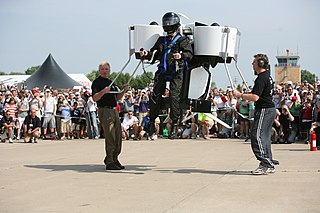
The Martin Jetpack was a single-person aircraft under development. Despite its name, it did not use a jet pack as such, but ducted fans for lift. Martin Aircraft Company of New Zealand developed it, and unveiled it at the Experimental Aircraft Association's 2008 AirVenture in Oshkosh, Wisconsin, US. The US Federal Aviation Administration classified it as an experimental ultralight airplane.

The Dornier Do 29 was an experimental aircraft developed by Dornier Flugzeugwerke and the Deutsche Versuchsanstalt für Luftfahrt in the 1950s, used to test a tilting-propeller system for short takeoff and landing (STOL) aircraft. The concept was proved successful in flight testing; however, no further development of the system or aircraft was proceeded with, and at the conclusion of its test program the Do 29 was retired.
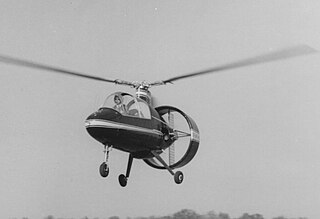
The Avian 2/180 Gyroplane was a two-seat, single-engine autogyro built in Canada in the 1960s. Several prototypes were built but production was not achieved.

The Vertical Take-Off and Landing Experimental Aircraft program is an American research project sponsored by the Defense Advanced Research Projects Agency (DARPA). The goal of the program is to demonstrate a VTOL aircraft design that can take off vertically and efficiently hover, while flying faster than conventional rotorcraft. There have been many previous attempts, most of them unsuccessful.



















